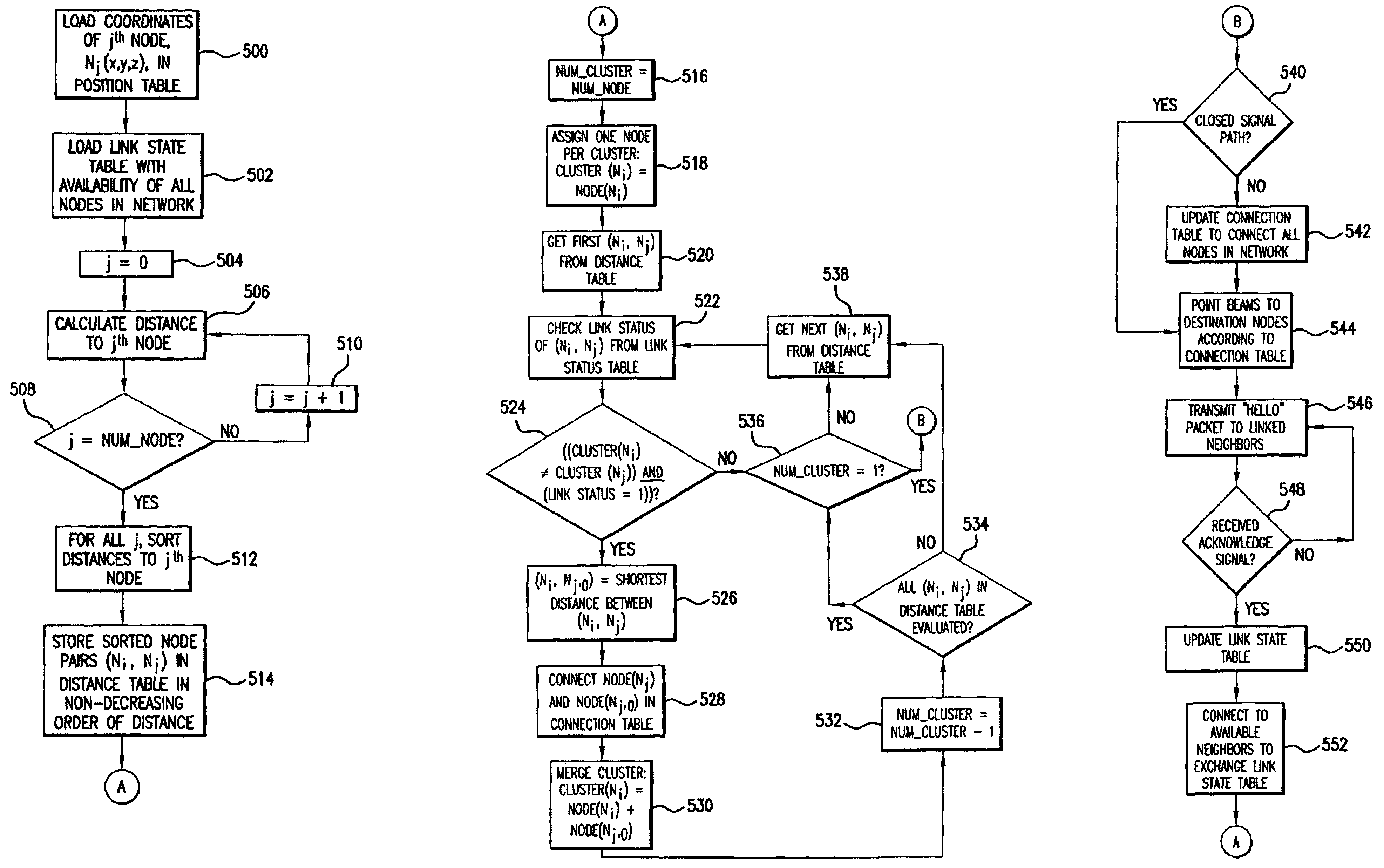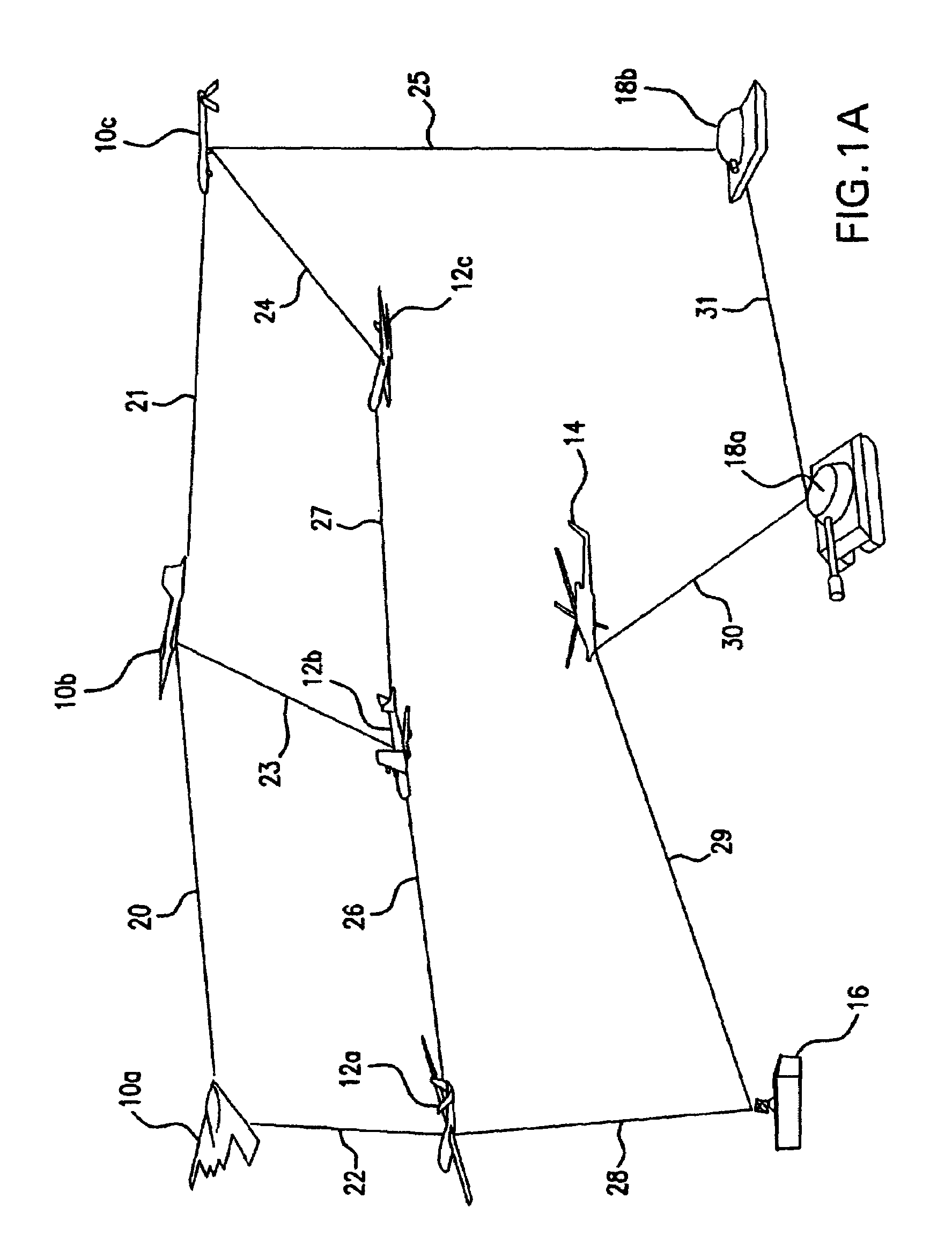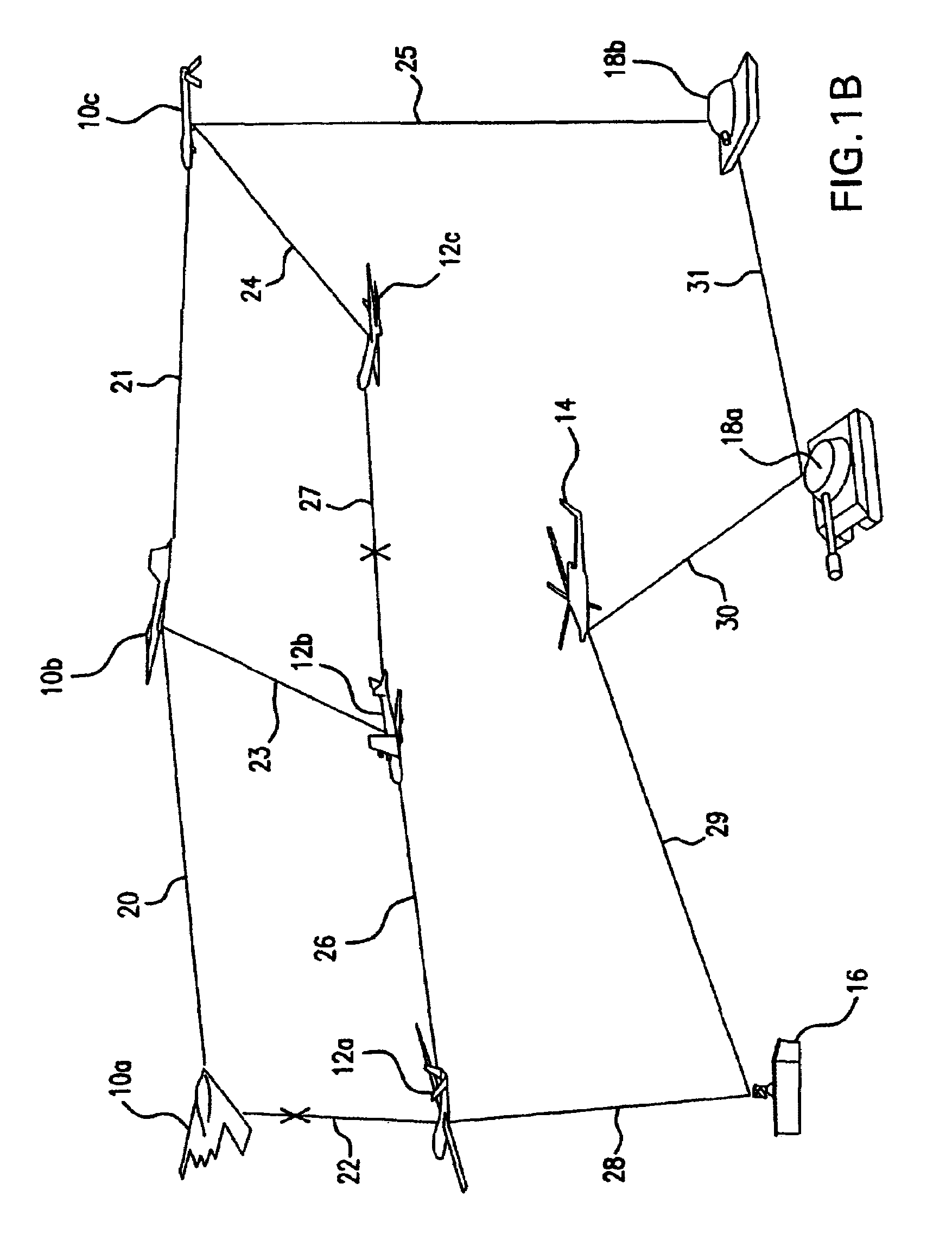Optical wireless networks with adjustable topologies
a wireless network and topology technology, applied in the field of dynamic reconfigurable communication networks, can solve the problems of limited data rate, limited range, and inability to meet the needs of users,
- Summary
- Abstract
- Description
- Claims
- Application Information
AI Technical Summary
Benefits of technology
Problems solved by technology
Method used
Image
Examples
Embodiment Construction
[0018]Referring to FIG. 1A, there is shown an exemplary embodiment of a communication network for which the method of the present invention provides substantial benefit. FIG. 1A represents various equipment that may compose a military combat setting. While the present invention has a much broader field of application than the illustrated military combat setting (such as providing a solution to the last mile problem discussed above), combat communications pose particular problems for which the present invention is well adapted. First, inter-vehicular communication on the field of combat should be secure to avoid unwanted enemy surveillance thereof. The present invention makes use of directed beams of electromagnetic radiation, such as beams of laser light, for carrying an information signal between the nodes of the network. By conveying network traffic on the directed beams between network nodes, the information carried thereon is not broadcast and is shared only between the two node...
PUM
 Login to View More
Login to View More Abstract
Description
Claims
Application Information
 Login to View More
Login to View More - R&D
- Intellectual Property
- Life Sciences
- Materials
- Tech Scout
- Unparalleled Data Quality
- Higher Quality Content
- 60% Fewer Hallucinations
Browse by: Latest US Patents, China's latest patents, Technical Efficacy Thesaurus, Application Domain, Technology Topic, Popular Technical Reports.
© 2025 PatSnap. All rights reserved.Legal|Privacy policy|Modern Slavery Act Transparency Statement|Sitemap|About US| Contact US: help@patsnap.com



